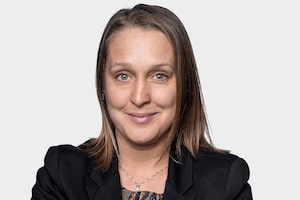In the span of one short year, the tax-free savings account has ballooned in popularity.
The amount of money in TFSAs swelled by 27 per cent in the final six months of last year, and while most assets are still sitting in savings accounts at retail banks, growth at full-service brokerage accounts is accelerating.
According to a report that Toronto-based financial research firm Investor Economics will publish this week, Canadians opened 4.7 million TFSA accounts by the end of December, 2009, containing assets of $15.8-billion. That includes the 3.6 million accounts holding $12.4-billion that sprang up from January to the end of June of last year.
There are about 27 million Canadians over the age of 18, which suggests roughly one in five people who are eligible to open a TFSA have done so.
|
Investor Education: TFSAs
|
Judith Cane is in Vancouver, partying in skiers plaza, thanks to her TFSA. The 53-year-old Ottawa independent financial adviser opened her account in January of 2009 and made roughly 8 per cent by investing in mutual funds. She used the money from her TFSA to pay for her family's holiday to the Winter Olympics.
"We use mine for special vacations, like this trip," Ms. Cane said. The money going into her husband's TFSA will be used to supplement their son's registered retirement savings plan.
Most of the TFSA funds - $11.9-billion - are invested with retail banks, the Investor Economics data shows. But TFSA assets with full service brokerages and online discount brokerages are growing fast, closing the year at $1.7-billion and $1.4-billion, respectively.
At the end of 2009, the average amount held in each TFSA was $3,400. The average assets for accounts opened with retail banks were on the low end of the scale at $3,170 while the average among full-service brokerage accounts were on the high end at $5,240.
Carlos Cardone, a senior consultant at Investor Economics, says most of the TFSA money at the retail banks is sitting in savings accounts and GICs. The funds held by full service brokerages are likely invested in market-sensitive instruments like equities, bonds, and funds.
. Weigh in on whether you would stash some extra money into an RRSP, RESP or a TFSA.
Investor Economics forecasts that within a decade, assets in TFSAs will reach $160-billion. In the near term, however, Mr. Cardone says the explosive growth witnessed in 2009 is unlikely to be repeated. "We should not expect to see a couple million accounts opening every six months," he said.
By comparison, contributions to Canada's long-standing tax shelter savings product, the Registered Retirement Savings Plan, hit $33.3-billion in 2008, according to the latest data from Statistics Canada.
Jamie Golombek, managing director of tax and estate planning at CIBC Private Wealth Management, says the take-up rate for TFSAs is still disappointingly low. "I think that over the next number of years, the entire financial planning situation will change and Canadians will start directing all of their savings to TFSAs, to the extent that they are able."
Although TFSAs are great way to save for a rainy-day, he thinks people should start to look at them as a long-term vehicle. Specifically, Canadians who will be in a higher tax bracket when they retire than they are today should think about maximizing their TFSA before they contribute to an RRSP, Mr. Golombek says. "I believe that within the next generation, TFSAs will become the number one source of retirement savings for the majority of Canadians."
|
Five things you should know about TFSAs:
|
 Roma Luciw
Roma Luciw